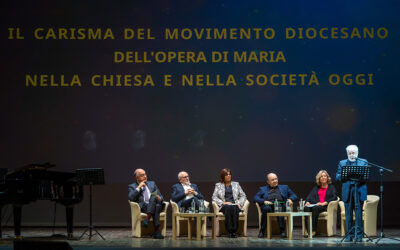
“Two women, on closer acquaintance, prove to be in special harmony with the objective of reform of Benedict XVI – who is more convinced than ever that everything, both in the Church and in society, must start afresh from God as the best guarantee for surmounting the present cultural, economic and religious crisis. They are Teresa of Avila and Chiara Lubich. In different epochs they both devoted their lives to this common ideal and contributed with their writings to a more genuine understanding of Christian life. Both these women found a wide audience in the Catholic Church. Keeping them in mind today, when people are becoming aware of the urgent need to make the faith reach people’s hearts, is particularly helpful.
Among other things, their timeliness stems from their both being champions of a spiritual renewal which originated in the climate of two important reforming Councils: Teresa, following in the tracks of the Council of Trent (1545-1563) in the century of the Renaissance; and Chiara, whose intention was confirmed by the Second Vatican Council (1962-1965), in the mid-20th century. In the wake of these Councils the holy Carmelite and the foundress of the Focolare Movement founded experiences of Christian life that have been beneficial to large numbers of faithful and to the entire Church.
The most reliable teachers of spirituality converge increasingly in recognizing both the timeliness of Teresa’s and Chiara’s thought and the complementarity of the ways they suggest for the imitation of Christ and the sanctification of daily life. The force of this thinking consists in faith lived for love and with boundless love for God and for our neighbour, the only truly effective sign if the Gospel is to be credible in the eyes of our contemporaries.
For the discovery of this spiritual affinity between Teresa and Chiara we are indebted in particular to Fr Jesús Castellano Cervera, a Carmelite. He died at the beginning of the Pontificate of Benedict XVI, the Pope-theologian driven by an equal passion for the primacy of God’s love in the Church. It should now be no mystery that in his reforming action the Pope insistently asks the Catholic Church to let herself be guided and shaped by love, as embodied in Jesus, to restore efficacy to the work of evangelization.
Teresa, as is well known, is famous for her The Interior Castle, the work considered a classical path to personal sanctification. Chiara responded to the signs of our time, adding to Teresa’s platform her own spirituality of the exterior castle, that is, of holiness sought in a community form as Church: two women, two castles; not in opposition but complementary.”
(Source: Osservatore Romano, 04/07 2012)
Full text: A Spirituality That Is Always Current by Bruno Moriconi




0 Comments